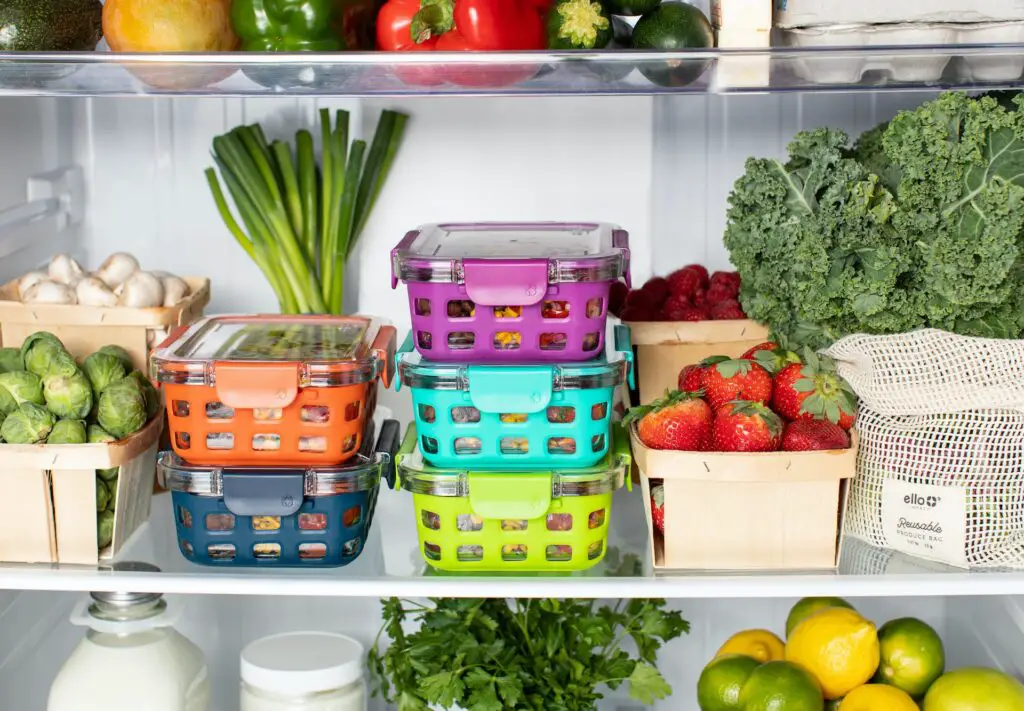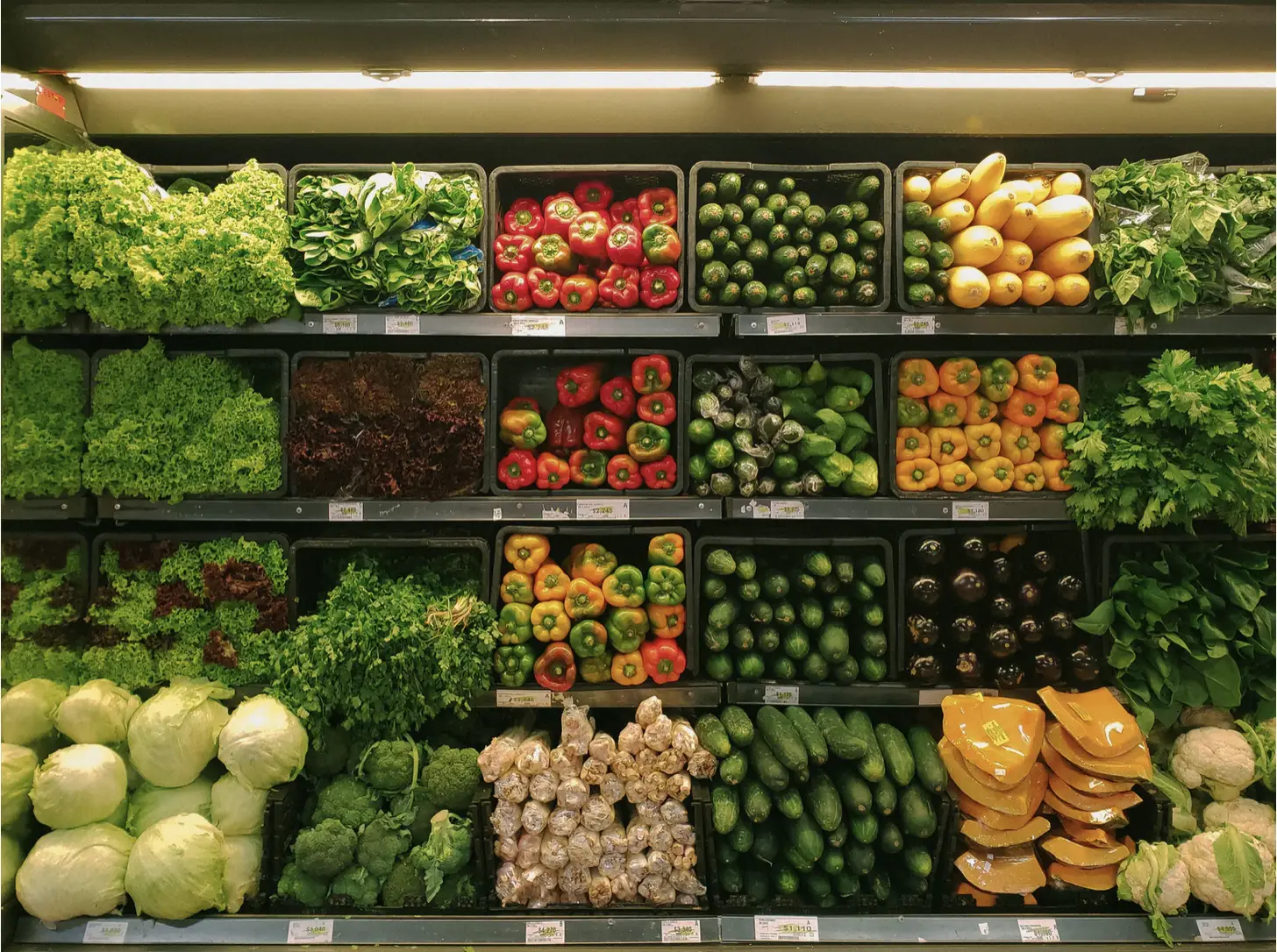This post may contain affiliate links. Please read the disclosure for more info.
If you’re cooking for a large family, you’re likely already familiar with the daily struggle that is putting dinner on the table every night- and making sure these meals are nutritionally balanced as well can be an added hurdle. Add in a limited or small budget, and the task at hand can start to feel downright impossible.
We know that so many families face the challenge of making sure everyone is fed and provided with the nourishment that they need to thrive throughout their day, and that many of those same families face financial constraints that can feel incredibly limiting.
If you and your family are in the process of figuring out how to feed everyone on a budget, we’re here to help. Read on for some great tips.
Buy In Season
It’s fairly passed around knowledge that in-season produce is generally more affordable than their out of season counterparts. It may be less commonly acknowledged as to why this is the case. Simply, it comes down to supply and demand. In-season produce is typically offered in a large supply in your area, making it cheaper than out of season produce which must be imported from far and wide before it makes it to your grocery store. This means that if you’re aiming to incorporate or increase your family’s fruit and vegetable intake, pay attention to what’s growing at the moment.

Summer produce includes favorites such as strawberries, blueberries, tomatoes, and even sweet corn, while fall gives bounties of apples, onions, and pumpkins. Turn seasonal winter vegetables such as squash and sweet potatoes into filling, delicious soups that will nourish a large crowd without breaking the banks.
Before heading to the grocery store, do a quick search to determine what is in-season in your area. The USDA SNAP-ed website includes a helpful guide to seasonal produce, but local resources can help you further understand what is available in your area. Keeping an eye out for great deals on local produce can save you money, and maximize the nutritional density of your family’s plate.
Buy In Bulk
If you’re aiming to reduce the amount of trips to the grocery you take per month, and also save money overall, buying in bulk can be a life saver. Cheap and nutritious staples such as beans, rice, oats, and even canned goods can be bought more affordably in bulk. The up front cost of a bulk bag of rice may seem pronounced, but the cost per serving is significantly cheaper than regularly purchasing smaller sized bags.
Of course, it’s unrealistic to expect families on a budget to buy all of their favorite staples in bulk. To maximize the benefits of this tactic, pick a few key items that are enjoyed most frequently in your home, and budget for those items. Many groceries stores offer special sections devoted to buying in bulk. There, you can browse a wide selection of grains, nuts, and flours, and decide what works best for your family.
It is important to recognize that some bulk items such as nuts and large containers of spices should be avoided, as many of these items simply may not get enough use in your household, or may go bad before they are fully used.
Grow What You Can
While it can be work to start growing your own food, and not all families may have the room or resources, households that are able to start their own gardens can quickly reap the benefits. Upfront costs of starter plants or seeds are not typically bank breaking, and a productive garden can give you a fresh, healthy source of produce all year long. Staples such as tomatoes, cucumbers, peppers, and even peas and strawberries can all be grown in backyards across the country.

Looking to add flavor? Buying fresh herbs often can be pricey. Even a small investment in indoor or potted herb plants can make an affordable difference in the quality and flavor of your food at very low cost to you.
If you are unable to grow your own food, try looking into community gardens. Many community gardens provide pick-your-own produce periods for neighbors in need. While not feasible for all families on a budget, those that are able can reap great rewards both in saving money, and in the availability of fresh and highly nutritious food for the entire family.
Minimize Waste
When it comes to maximizing your budget, one of your family’s first concerns should be minimizing waste. Throwing away food translates into money wasted, and there’s nothing more frustrating than buying an item that you are ultimately unable to use. Additionally, strategically minimizing food waste means that you are getting the most from your budget and your meal, as well as the additional benefit of being eco friendly.
Minimizing your food waste starts by knowing your family’s daily needs, and being careful not to exceed them. Buying too much of an item such as fresh berries, or cooking too much of a meal that does not take well to leftovers almost guarantees that some of what you buy or make will inevitably end up in the trash. Pay attention to how quickly certain items fly off the pantry and refrigerator shelves, and tailor your grocery list accordingly.
Another great way to minimize waste is to understand the difference between a sell-by date, and a use-by date. A common misconception in many households is that the sell-by date, or even use-by date are hard and fast rules. The truth is less black and white. Sell-by dates are used by stores to ensure that food safety rules are met, and that stores do not end up selling stock that could be spoiled and make customers ill.
However, sell-by dates do not mean your product’s lifespan is up. When determining whether or not to toss food, trust your nose and eyes. Food that has changed in color, consistency, flavor, or smell has likely gone bad. However, milk or yogurt that is a few days past the sell-by date is likely fine, especially if it passes a sensory assessment. Using your judgment to minimize food waste can go a long way to stretch a small budget.
Make The Freezer Your Friend
Along the same lines, a great way to ensure that your household is not producing significant waste is to ensure that you are maximizing long-term food storage. Many highly nutritious foods that would spoil at room or refrigerated temperatures can benefit from exponentially longer life-spans when frozen. Produce, meat, fish, and even bread and cooked grains can be frozen for weeks or even months while retaining all of their benefits and quality.

Looking to work more produce into your family’s diet but feeling the pressure in the produce aisle? Shop frozen! Frozen fruits and vegetables are often much cheaper than their fresh counterparts but offer all of the same nutritional benefits. Not to mention, most produce is picked and flash frozen at the peak of freshness, meaning the quality is often equal to and more consistent than fresh offerings.
Know What You Like (And What You Don’t!)
Knowing exactly what your family enjoys can be the difference between spending money on a meal that your kids push around the plate, and making sure everyone leaves the table happy. Establish family favorite recipes that also check all your boxes in regard to nutritional options. Meals that can be prepared in bulk and make great leftovers such as soups or pasta dishes can be family favorites that don’t break the bank, all while serving large crowds. Chili, spaghetti with roasted vegetables, and lentil soups are all affordable crowd pleasers that endure the fridge or freezer with relative ease.
Meal Plan
If you’re serving a large crowd on a small budget, planning is your best friend. As is the case in nearly all areas of budgeting, having a good plan can make all the difference. Entering a grocery store with weekly recipes in mind means you won’t be inclined to spend money on products that won’t be useful, or nutritionally beneficial.
Of course, meal planning requires some work, but once mastered you’ll be in possession of a list of recipes that you can feel comfortable and confident in serving. If you’re looking for budget friendly meals, countless sources of inspiration exist online waiting for you to dig in. In the long run, meal planning is empowering, keeps your kitchen well stocked, and helps you to avoid the temptation of less healthy convenience options such as fast food. If transportation to your nearest grocery store is difficult, meal planning can also help you to reduce the amount of trips necessary in order to keep your favorite meal in rotation.
Make It At Home
Why buy what you can make cheaper at home? Convenience is great, but it costs. Ever notice how pre-cut produce sells for significantly more than their whole alternative? Taking the legwork out cooking may save you a bit of time up front, but will cost you money in the long term.
Fortunately, many grocery store staples can be reproduced more affordably from your own kitchen. Costs of pantry essentials like bread can be reduced by learning how to bake loaves at home. Interested in fancier items like oat milk but put off by the cost? Many of these items can be made at home with a few simple tools for a fraction of the cost per serving.
We know you’re busy, and not every item is worth the time and effort to make from home. However, mastering just a few at-home favorites can save you money overall, and help keep your family nourished.
Expand Your Horizons
Not only does eating a wider variety of foods make it increasingly likely that your family’s diet is well-rounded, but it also affords you more flexibility in your budget. Widening your food horizons means more options become available, including foods and grocery stores you may not have previously considered.
Shopping at big-box grocery stores can be familiar, but to save money, try branching out. Many ethnic food markets sell similar produce to that offered in big name grocery stores at a more affordable price. Additionally, staples like rice and beans can be purchased at discounts, along with some foods your family may not have tried yet.

When it comes to maximizing your nutritional value as well as your budget, broadening your horizons in terms of palette and stores can help you to get the most bang for your buck.
Put Meat on The Sidelines
If your household is used to a dinner plate where animal protein takes center stage, it may be a good time to reconsider the composition of your plate. Meat is a great source of protein and essential nutrients such as vitamin B12, but it can be expensive- especially if you’re looking to serve a larger family. Instead of making meat the star of your show, let it accompany the meal.
Making vegetarian sources of protein an additional, or complementary protein source can help you stretch your weekly meat, poultry, and fish, while also incorporating a wider variety of foods into your family’s diet.
-
Thoroughly Investigate Your Options
If you’re looking to increase the value of programs like SNAP benefits, or are just interested in knowing your options, doing some research can reveal some unexpected opportunities. Many farmer’s markets will accept SNAP benefits. Some local co-ops may offer reduced membership prices, or accept food stamp benefits.
Knowing the opportunities available to you can help you to maximize the quality of your family’s nutrition at a lower cost, as well as expand your shopping options. The more options you have at your disposal, the more freedom you are afforded and the more choices you have, which makes putting meals on the table an easier task, overall.


 Windowsill Herb Gardens: How To Enjoy Fresh Herbs All Year Long
Windowsill Herb Gardens: How To Enjoy Fresh Herbs All Year Long
Leave a Reply